The Astonishing George Benjamin: A Composer for our Age
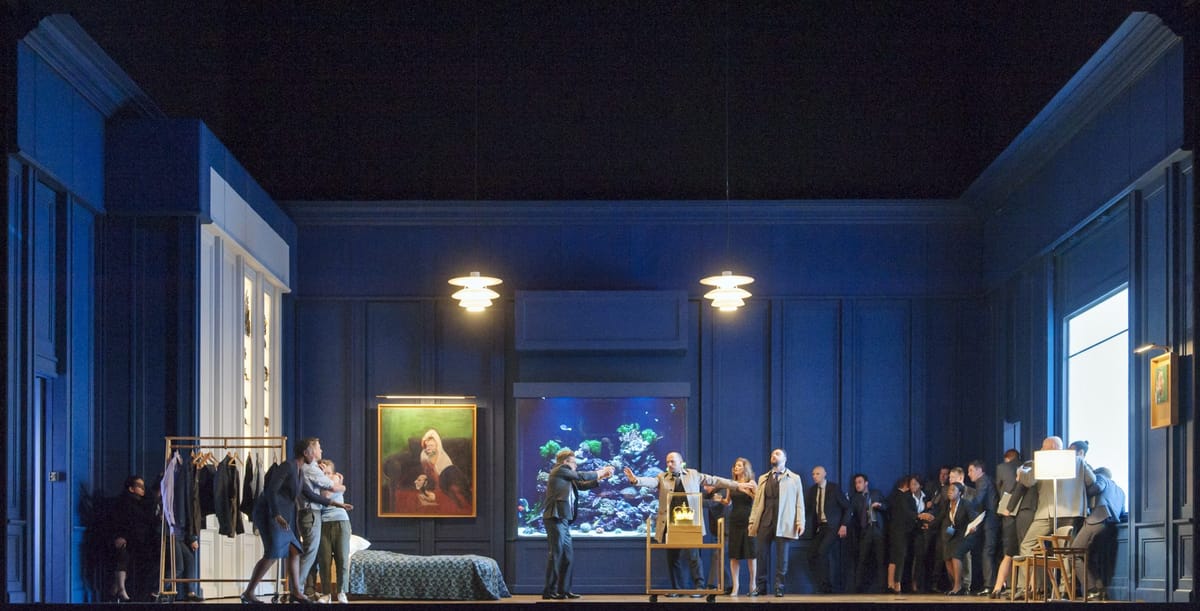
I made it my business to explore the music of my contemporary George Benjamin in recent months, and was wondrously struck by the wealth and richness of his creative output, most especially in the outpouring of recent works. He is without question one of the most successful and accomplished composer of our time, shining too as an all-round musician, and placing his skills as pianist and conductor at the service of his music and that of other contemporary composers.
Having already seen Benjamin’s third opera Lessons in Love and Violence at its premiere in London with the Royal Opera House in May, I then decided that the two ravishing performances I had attended were not enough to satisfy my appetite for the music, and that I would go to see the same production twice again at the Holland Festival with the Dutch National Opera. This stark and powerful work, dramatizes the story of Edward II, and not for the first time. Based on Christopher Marlowe’s play Edward II, and developed by Benjamin’s longtime collaborator, the dramatist Martin Crimp, it spins out a relentless tale in seven tightly constructed scenes. Crimp’s text seemed crafted with restrain and economy, fashioned explicitly to serve the composer’s musical and expressive vision. However, as George Benjamin points out, the thrust of Martin Crimp’s text was very different from the earlier source. “The Marlowe is a magnificent play, but in our opera the narrative is changed, the perspective is changed, the culmination of the work is radically changed – we didn’t want our work to be a pseudo-Elizabethan drama.”
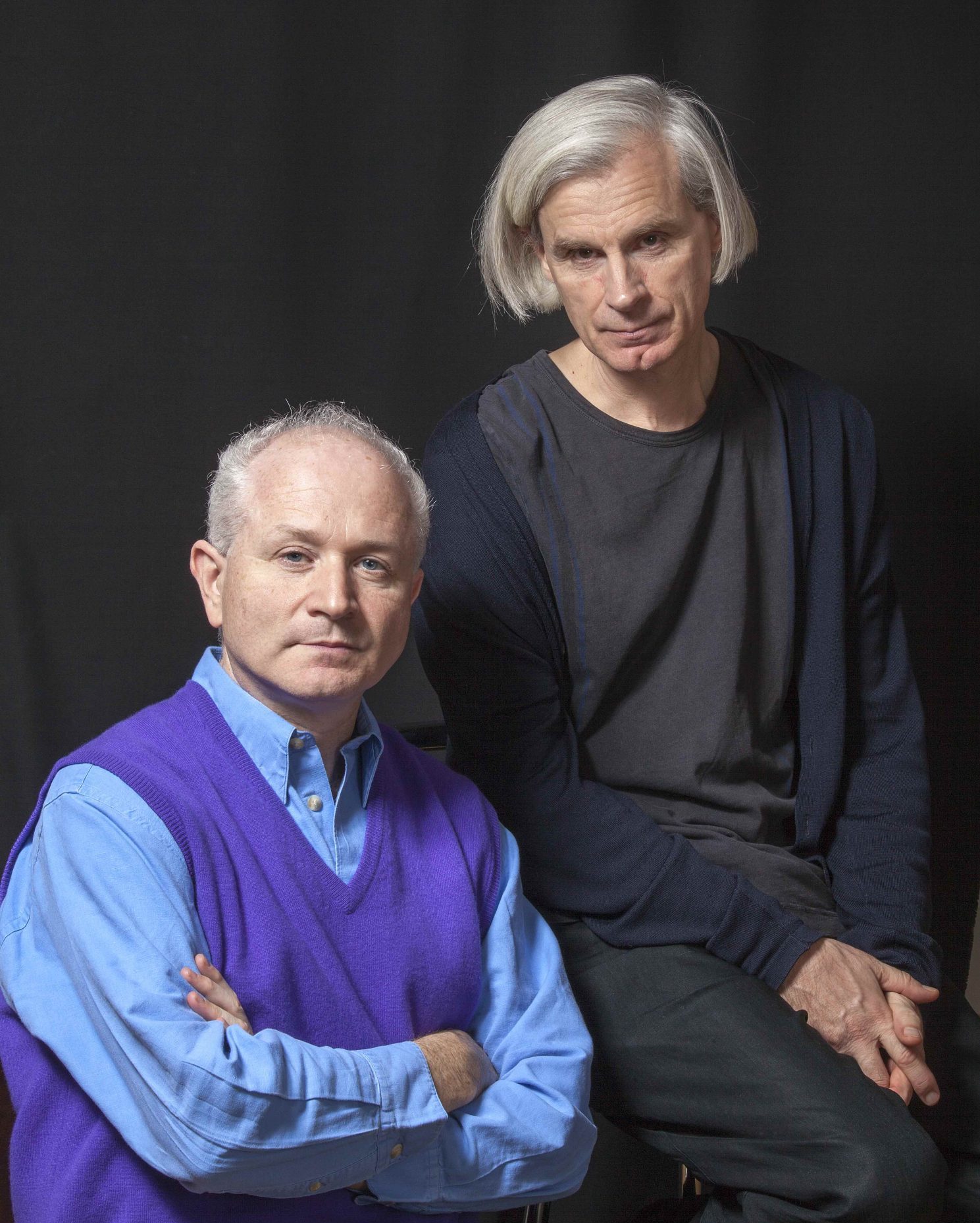
It might be said, one does not go to an opera just to hear a story. One can read that in the promo synopsis advertising the performance. One does go however to see how that narrative has been shaped, developed from an original source, how it has manifest compellingly on the dramatic stage, dreamt anew in the language of music-theatre. It is a complex transformative process. Opera lives and dies not only by the strength of the underlying narrative (and that’s never something to be underrated), but also by the quality of the transformation of source material into a powerful amalgam of music and drama. Not many “famous” composers bring it off, and modern music is littered with failed attempts. The narrative furnishes the basis and dictates the form and teleology of the work, but once it is in the hands of a gifted dramatist-composer team, it can be transformed into a condensed and highly-crafted artifice that brings a very specific focus in the hands of its master craftsman.
And master craftsmen these are indeed: What Benjamin and Crimp have achieved in their 100-minute opera is a work of extreme condensation in scenes separated by remarkable interludes. A perilous vein of brutality runs through the textual composition, with scenes piling on top of each other in a graded escalation as the screw turns. The “lessons” are told to the King’s two children and sometimes the stage seems set like a classroom with chairs arranged in rows. The ubiquitous presence of the two children, their faces often moulded in horror and occasionally in love, punctuates and attends the narrative. For this viewer, the love that the two children had for their father seemed almost the only ‘love’ in the whole work. Everything else that passes for love, including the love between the King and his lover, Gaveston, seemed deeply corrupt, undermined by an oppressive undercurrent of lurking violence, that could burst forth onto the surface at any time.
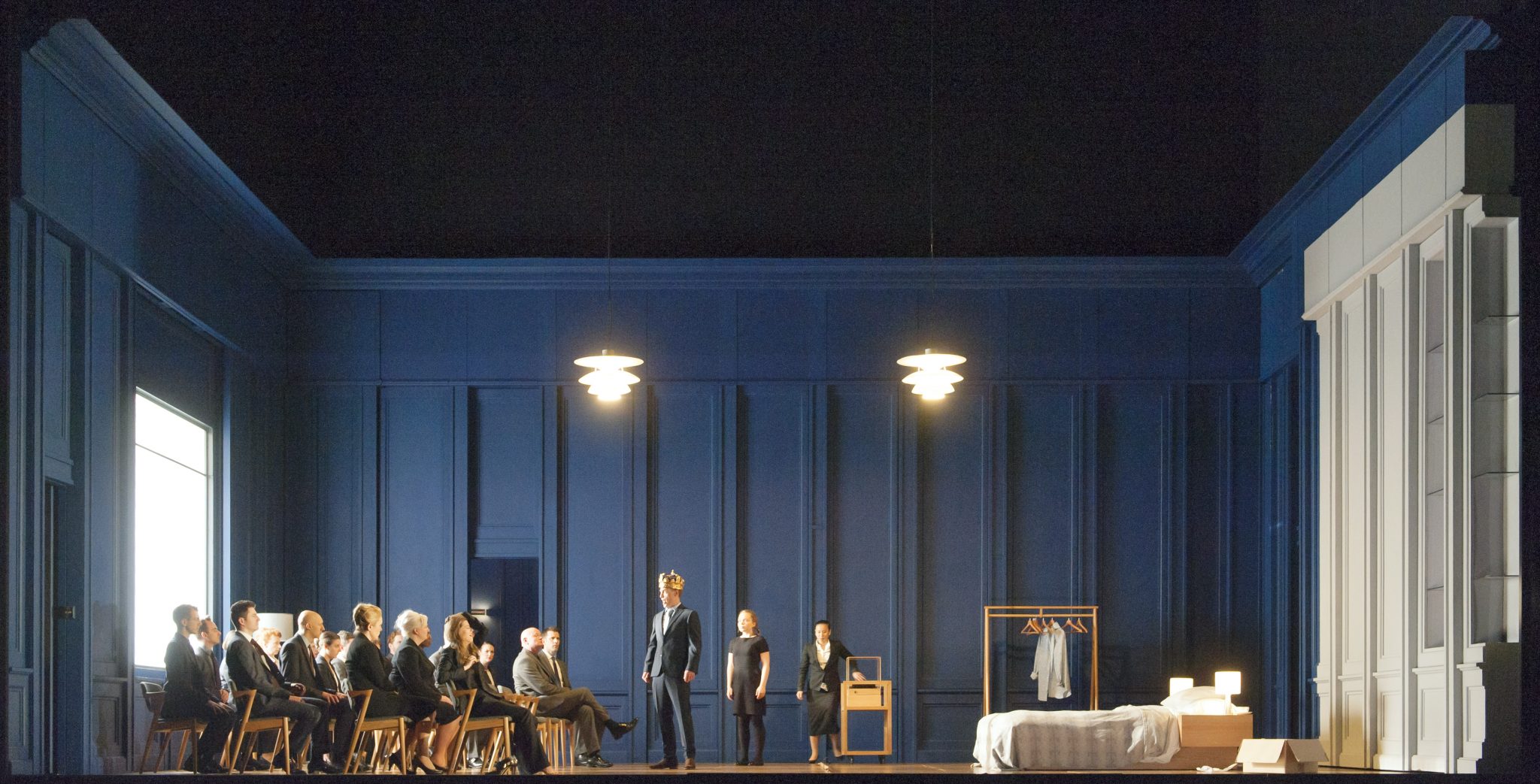
And burst forth it did. The ‘moral’ of the work is foretold in the first two utterances in the libretto: Intones Mortimer: “It’s nothing to do with loving a man. It’s love full stop that is poison.” That’s it then, love as poison is a theme, and it casts its vile shadow on everything and subsumes all in its perilous journey to the last scene. The characters are locked in relationships rife with twisted intention, despite which the music flashes moments of haunting beauty. The tension is pointedly underlined by the use of extreme slow motion in movement and gesture, in the story-telling style of the veteran director, Katie Mitchell. Indeed, this stylised movement took the work out of the orbit of naturalism and presented us with an artifice of time and motion that allowed for a more detached inspection of its deeply musical and dramatic surfaces. The concentrated power came directly from the text first, then the music, and then the stage-picture.
Of this process of collaboration and transformation, one can quote the composer himself, speaking in an interview with Oliver Mears, Director of Opera at the Royal Opera House:
“The dramatic shape on the page is always the first thing for me. How can I bring out Martin’s words through the singers’ voices and bring the environment of the orchestra to life, in a spontaneous, dramatic, alert way at every given moment. Martin’s texts have exactly what I want. First, the language isn’t normal, so it invites music. Second, there’s tremendous tension at every given point and you never know what’s going to happen, although there’s an architectural view of the whole shape, of the symmetry between characters and subjects and rhythm. Everything relates to everything else, everything is balanced with everything else. You’re dealing simultaneously with a very hot object that’s full of spontaneity and immediate drama, and equally with an object that is constructed like a crystal.”
‘Crystal’ would be an apt, if not even a perfect metaphor. I heard the music as a crystalline sculpture, and was held spellbound by the richly wrought score, every strand of imagery detailed and freshly compounded. Benjamin focused the energy, drawing it out relentlessly from first note to last, but with tremendous contrast between scenes, contrasts effected by tempi, characterisation and gait. The score made no attempt to illustrate, but allowed the text to erupt on the stage with a rawness and brutality that was curiously understated. Indeed, it seemed to achieve an overall ambience within a dreamlike space, and far from the excesses of representation. The music had an unusual lightness about it, aided by the frequent use of pizzicato strings and brittle textures, as this made the sung text easy to comprehend. Far too much contemporary opera is marred by over-scoring. In a meeting with the composer back in December last year, he had underlined to me how important it was that the singers didn’t have to force their voices through the excessive use of vibrato in order to be heard through the orchestral frenzy.

Benjamin’s writing for voices and use of text is mindful of natural prosody, albeit with some well-judged deviations. It could be said that not all composers are good with ‘text setting’, which is a combination of prosody and declamatory style. Some take it upon themselves to violate natural speech rhythm as a stylistic tic. Says the composer:
“A lot of the time the natural rhythms and indeed curves of speech patterns influence what I’m doing, a lot. But there is the emotion of the person singing and the intention of what that person’s really trying to communicate too, which may well not be the same as what they’re actually saying. So there can be distortions, stutters, breaks and melismatic outbursts according to those influences. And there can be times when I intentionally go diametrically against the natural speech rhythms to emphasise someone’s psychological state of mind or indeed the way they are trying to communicate to the other people in the room. But natural speech patterns are always in the background.”
Lessons does not generally lean towards huge climaxes. Though there were lavish bursts of shattering brass sound at a few key moments, they were quite contained and did not linger. ‘Singable’ tunes were a mandatory casualty at the service of a more austere artistic vision, albeit one intensely concentrated and delicately scored. I really do wonder, did this give the music a unique compelling power, freed from the shackles and the attention-seeking of the ‘big tune’ … ?
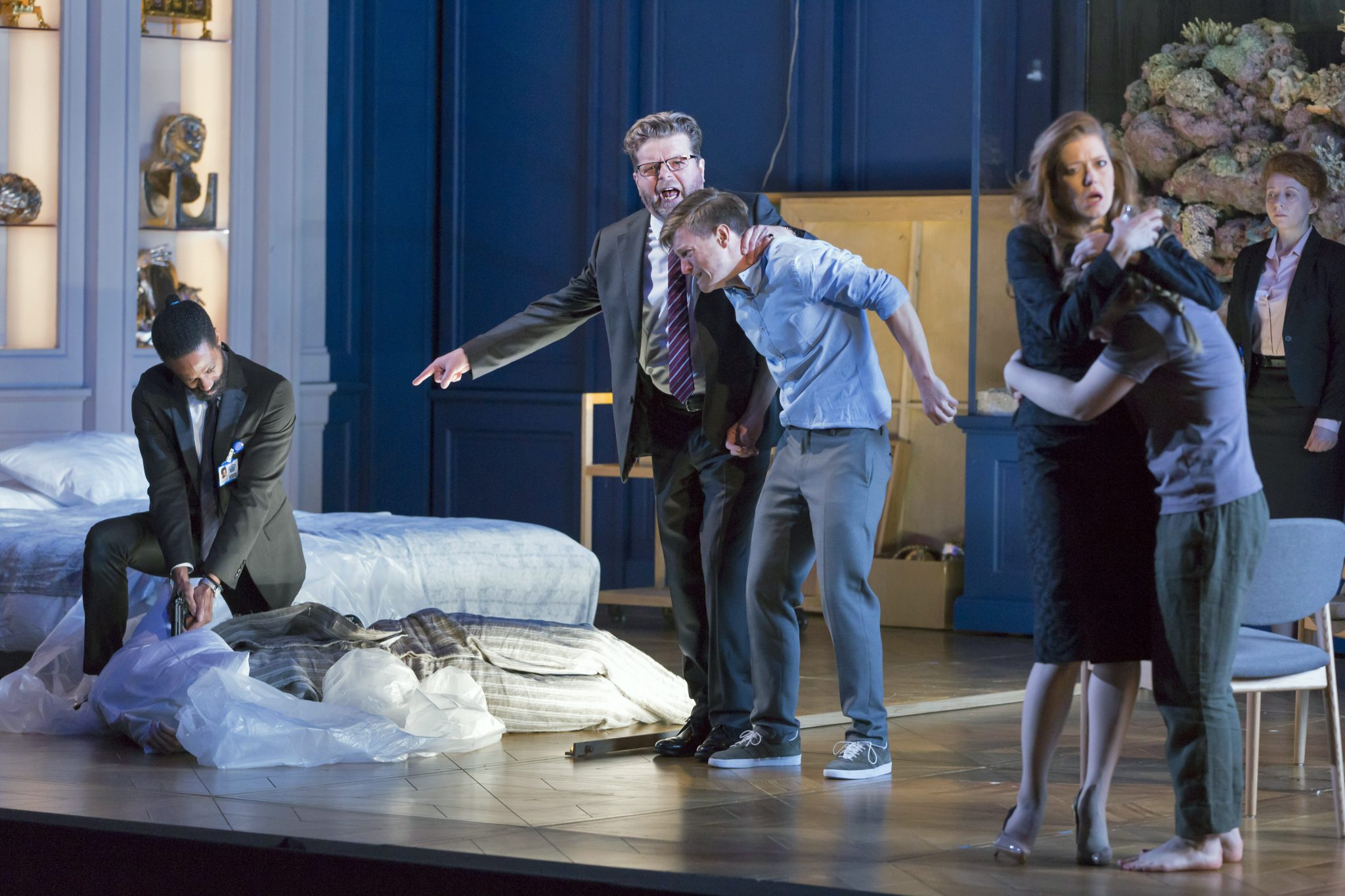
As a composer, I had a personal interest in how the work would unfold harmonically, in the absence of tonal reference points that could have given it necessary structure. The music seemed magically suspended in a free atonal space, defined by strong pitch relationships that were also heightened by the deft use of orchestral colour, inventively shaped, and with textures that kept the ear constantly engaged and busy. Further inspection might yield more compositional insights. So watch this space!
What is clear is that Benjamin was meticulous about the temporal and textural design of the work, ensuring the scenes were, as he put it,
“differentiated to maintain the interest and variety that opera demands. Equally, the scenes need diversity and unity within their own borders. The initial scene is capricious to a degree unlike anything I’ve written before. It changes tempo, material, fabric, two or three times a minute.”
Tone colour was chosen to reflect the ambience and needs of each scene.
“The first one is capricious, varied and volatile. In the second, the terrible outside catastrophe of the kingdom comes inside the court, so I had to reflect the disaster that was happening in people’s lives. That means that the tone is steely and often desolate and grey…”
Lessons is decidedly a dark work. Its pedagogy of violence, from the first unsettling scene, percolates down into the minds of the horrified children, transforming them into creatures of cruelty themselves. What passes for love is a travesty, and the little ‘real’ love in the children is eventually engulfed by its very opposite. It is hard to escape the cynical conclusion that all love is capable of depravity and that love and violence seem inextricably linked. There is a touching moment in Scene 5 where the son pleads with Mortimer for mercy, for the Madman to spared from execution, saying “But his mind’s not right”. It doesn’t wash, and the man is strangled with a rope before his eyes. Lesson learnt, the poison spreads. Soon it is the son who will display moral depravity. In the final scene he will assemble an audience and stage the execution of Mortimer, now his mother’s lover, at the hands of his own sister. Mortimer’s karma will come back full circle, as his own life will flicker to an end in the very last instant of imagery as the curtain falls on show.
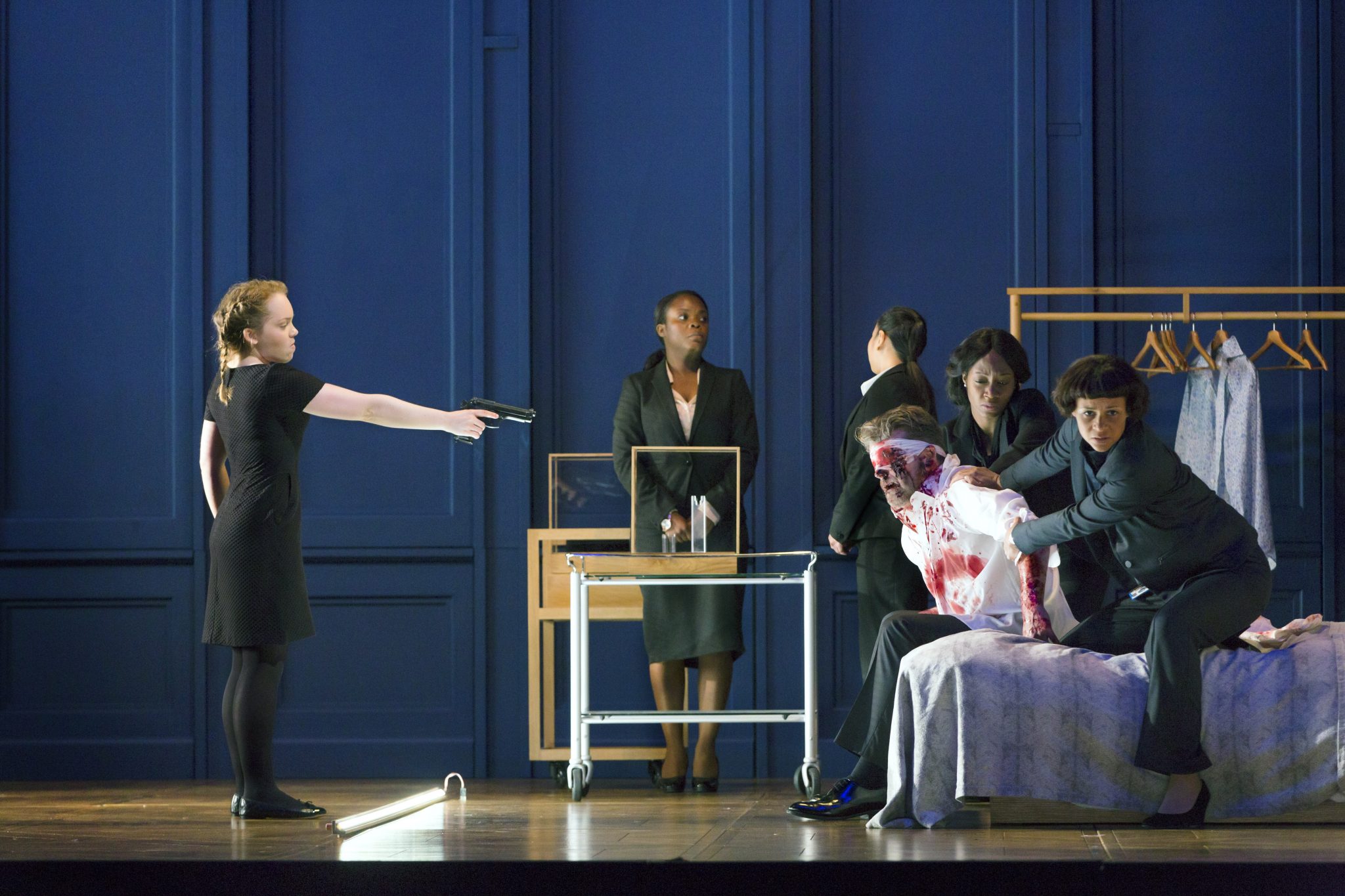
The music does not illustrate, rather gets its potency from a tight teleology of escalation in its action. We are held enthralled by constantly ‘encased’ vocal recitatives, text carefully wrapped within orchestral shapes that give emotional resonance and drive to Crimp’s crisp text. The chorus could have been marshalled to boost the decibel counter, but uniquely, the composer opts to make it entirely and ingeniously silent, spilling onto the stage with mesmeric effect in slo-mo. It is a key: heavy-handedness is absent from the score. It carries its bleak narrative rather lightly in poetic images of crystal. This is a composer at the height of his expressive powers. Unsurprisingly, Benjamin received a rapturous standing ovation in every performance I attended. I met the brilliant Pierre Audi as he came out of the theatre after one performance. He said simply: “Fantastic, wasn’t it?” Indeed, it was.
The Holland Festival, with Ruth Mackenzie at the helm in her final year as Artistic Director, brought into focus the music of George Benjamin as a featured composer in 2018. Thus it also offered an opportunity to hear Benjamin’s (previous) second opera Written on Skin, with a libretto again by Martin Crimp. It was performed minimally, semi-staged at the beautiful Muziekgebouw aan ‘t IJ, which is set right on the river Ij, a venue that is not only an architectural delight but also a busy centre for contemporary music in the Netherlands. Though I had seen Written on Skin in October last year in another semi-staged performance at LSO St. Luke’s with the Melos Ensemble conducted by Oliver Zeffman (a memorable performance, incidentally), I was thoroughly unprepared for the ferocious power with which this earlier opera now came across in Amsterdam. Perhaps, having studied the score, it had crept under my skin?
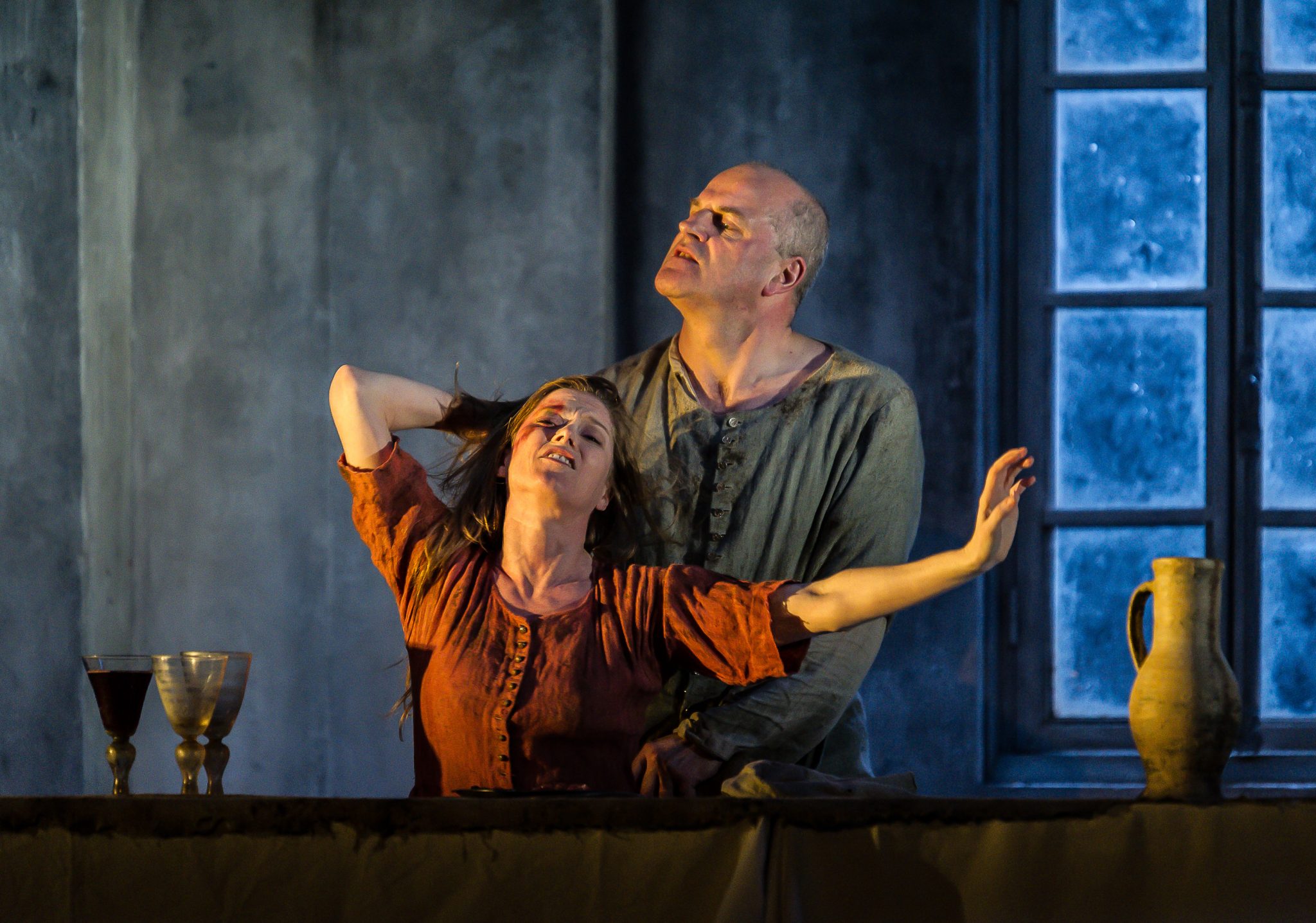
The work is driven on relentlessly on the back of a carefully constructed text in three parts, fashioned from an anonymous 13th century Occitan razo ‘Guillem de Cabestanh – Le cœur Mangé’. Much admired, this opera has already gained a formidable following, with multiple productions since its premiere at Aix-en-Provence Festival in 2012. The fifteen scenes show characters engaged in intimate conversations, all around the interactions of a murderously potent Protector, a professed lover of Art. He subjects his wife to oppressive domination, and commissions a work of art from a creator of illuminated manuscripts, ‘the Boy’. The wife Agnes falls in love with the Boy, and then cruelly drives him to destruction at the hands of the Protector, by asking the Boy to produce a Manuscript that portrays her love for him (i.e. the Boy). It is a horrific betrayal as the terrible plot tightens its noose around the Boy, the only positive character in the piece. Out of his love for Agnes, he fulfills her wishes, produces the manuscript and reveals it to the Protector, written on skin as manuscripts were written then, with inevitably tragic consequences.
This music now sounded so very different in the Muziekgebouw, though I cannot place my finger on exactly why. Perhaps it was just the brilliance of the renowned Mahler Chamber Orchestra? As with the previous performance I attended with the Melos Ensemble, the orchestra was fully visible on the stage, so every strand of instrumental fibre could be discerned. When the tuttis sounded one could separate out the timbral elements that coalesced together to create energy. So, from a compositional point of view, this was a unique opportunity to gain insight into the score, and literally be able to see the orchestration as much as to hear it. What struck me most about the instrumental sound was how original and fresh it all sounded. It eschewed the usual motions and clichés of contemporary music. All of the music was seemingly like a gigantic unique aural sculpture – or rather, a set of unfolding aural sculptures/formations. They eschewed memory and remembered gesture: the absence of traditional instrumental figuration produced a compelling sense of newness, which was both attractive and enthralling. The construction of climaxes was carefully judged and never seemed indulgent – a sure trait of Benjamin’s style. Performed without set and costumes, it was a raw theatre of voices and instrumental sounds only – something that the venerable Peter Brook might well have called “the rough theatre”. And it is, of course, the ultimate test of the durability and power of an operatic score – that it needs no production values to vent its furious energy and land a punch on its audience. The music itself draws us into the vortex of narrative violence without the staging having to illustrate this. The Protector predicts that he will kill the artist, and then he kills the artist! (This self-referential quality in the writing for the characters is an idiosyncratic feature of Crimp’s style.) But the production does not dramatise the killing on the stage. It all happens in the music. When the Woman eats what the Protector sets before her (as it happens, the Boy’s cooked heart that the Protector has ripped out), it is a text and a music laced with unimaginable savagery. A lesson in love and violence indeed, foreshadowing very next opera the dramatist and composer would collaborate on.
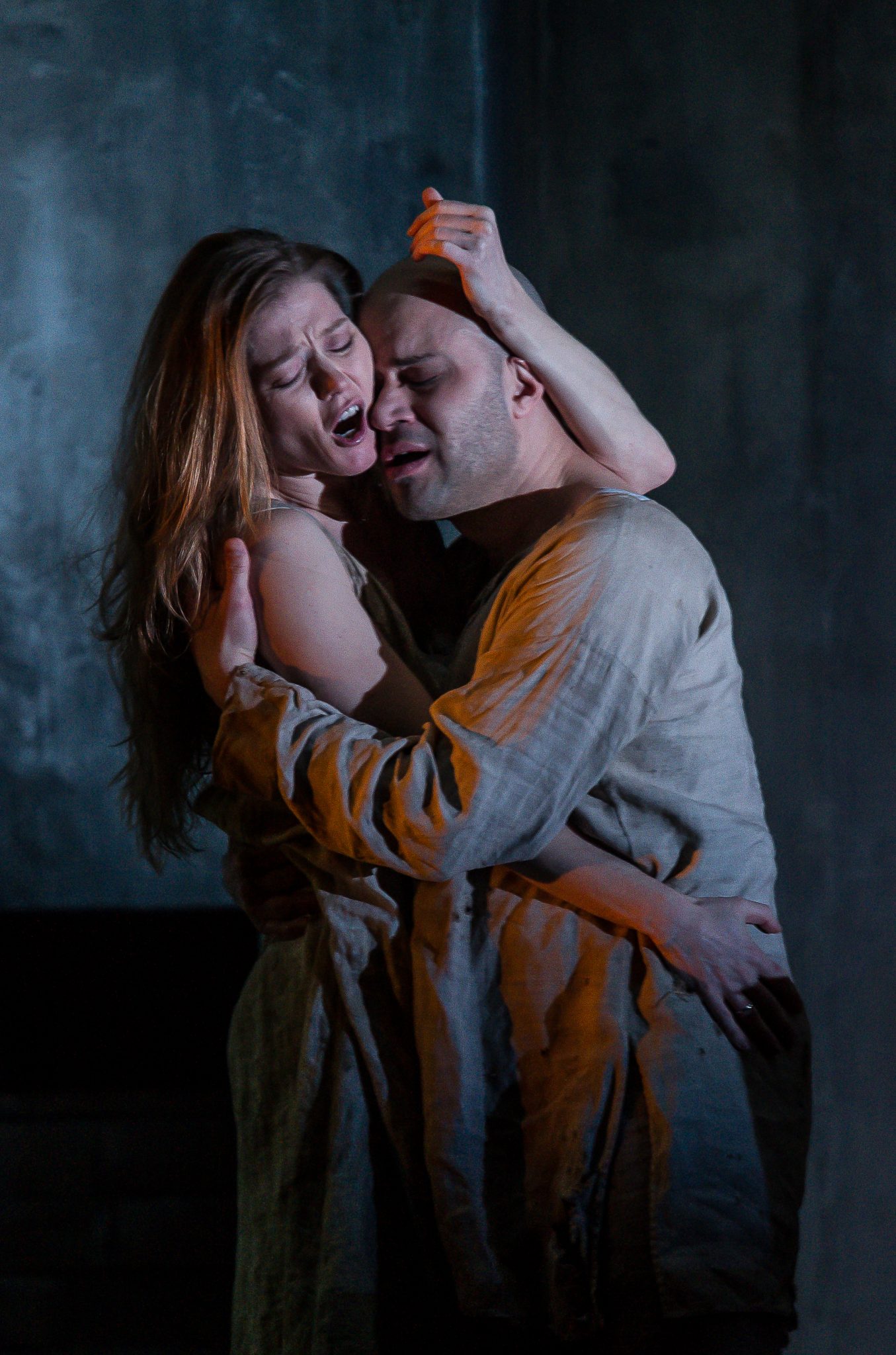
There were some unusual instrumental resources, sparingly used, but heightening the orchestral sound. The instrumentation included a magical glass harp, as well as a viola da gamba – a sensuous Baroque instrument whose strings are fretted and bowed. Its six gut strings produce a gorgeous ethereal sound, and the sparing use of this timbre gave the music an otherworldliness. A close look at the full score reveals a breadth of instrumental detail and figurative innovation that litter the music. Benjamin was much influenced by the twentieth century French masters, especially Messiaen and Boulez. Famously, he went to Paris to study with the legendary Olivier Messiaen (1908 – 1992) at the age of sixteen. He said of Messiaen that he was “the most wonderful teacher imaginable”. Worthy teacher and no less worthy student, but today George Benjamin is very much his own man, and his language is masterful, honed over many years and most certainly also informed by his prolific experience as a conductor. It does not appear to resemble anything else I have heard in recent years. If you are a composer, and even more if you are an opera composer, it pays to buy the full orchestral score and pore over it with an inquisitive eye and ear.
Written on Skin was performed exquisitely by the outstanding Mahler Chamber Orchestra, as it veered from delicate textures to brash tearing climaxes. Benjamin originally wrote the work with this orchestra in mind, and it has given several performances of it since 2012. So engaging and energetic was the playing by the musicians, it would seem they loved the work and the work loved them. It was conducted with supreme clarity by Lawrence Renes. It would be discourteous to single out any one singer from the brilliant cast of Written on Skin. As with Lessons, the actors and orchestras gave their all, there was nothing left to improve, not a crotchet or semi-quaver.
I had experienced two masterpieces of the 21st century and long may they reign.
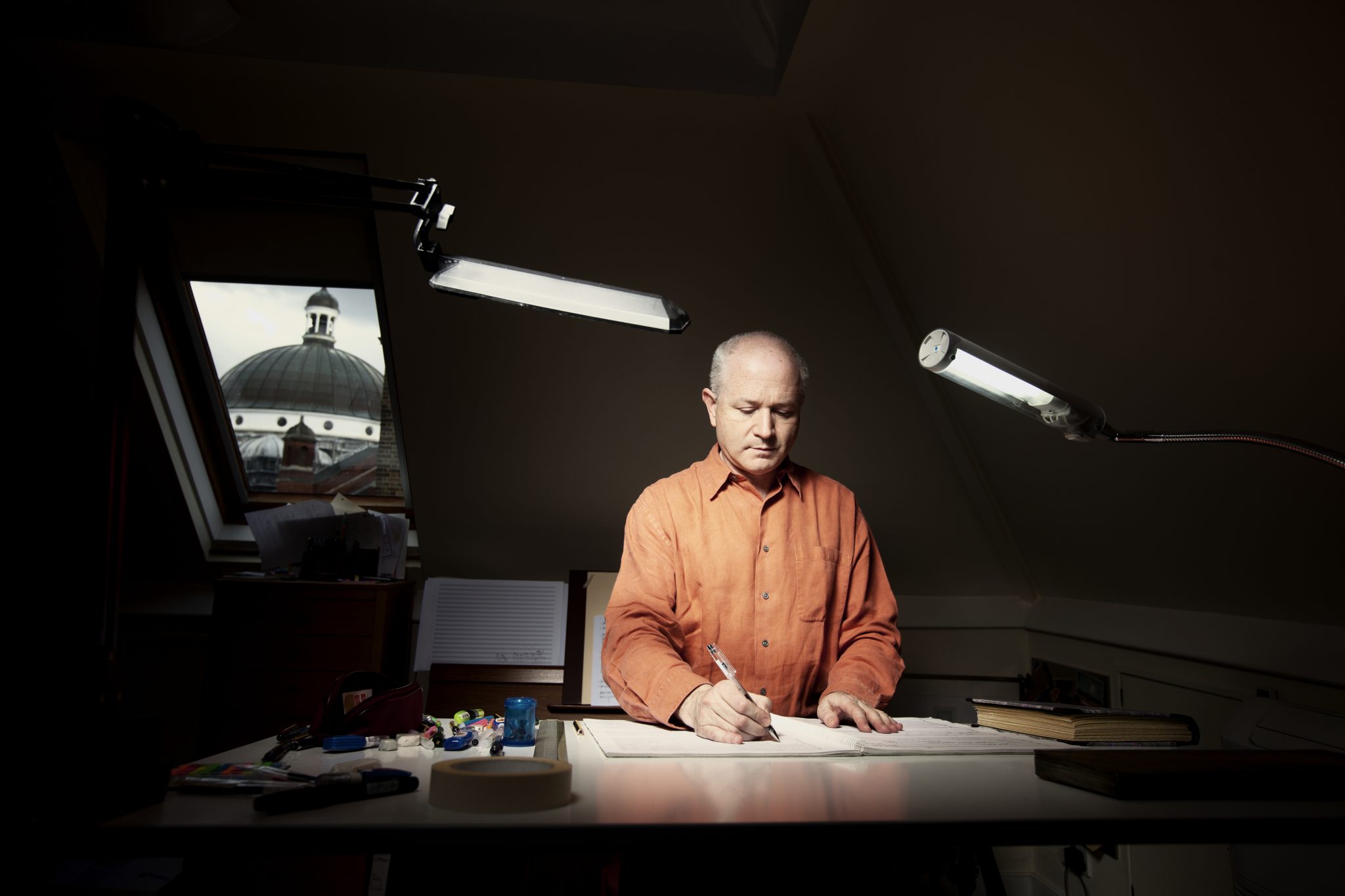
Synopsis by Martin Crimp
The Situation
The King lives in a close but uneasy relationship with his wife, Isabel, his two children, and his love, Gaveston, a man that the people fear and hate. With the country on the brink of famine and civil unrest, the King’s military advisor, Mortimer, a utilitarian who believes that all forms of love are ‘poison’, accuses him of political irresponsibility. On an impulse, the King banishes Mortimer, setting off a chain of devastating events.
The Scenes
Part One
Scene 1
The banishment of Mortimer.
Scene 2
At Mortimer’s instigation, Isabel is forced to confront the destitution and anger of the people, and agrees to the murder of Gaveston.
Scene 3
The King asks Gaveston to predict his – the King’s – future. At a private entertainment, Gaveston is seized.
Scene 4
On learning that Gaveston has been killed, the King rejects Isabel, leaving him fatally isolated.
Part Two
Scene 5
Mortimer and Isabel set up house together. They groom the King’s son to be puppet-king.
Scene 6
Mortimer visits the King in prison and persuades him to abdicate in his son’s favour. Soon after this, the King encounters death.
Scene 7
The King’s son breaks free from the control of his mother Isabel. Before an invited audience, he restores order.
This article first appeared on Param Vir’s Blog.





